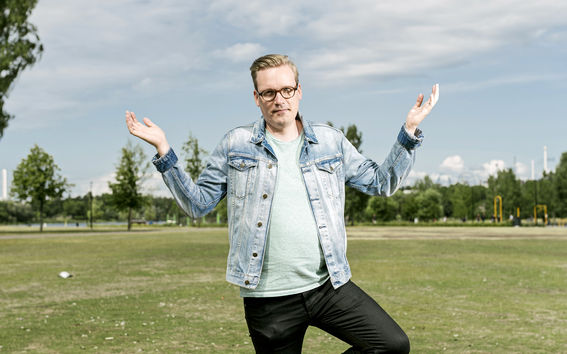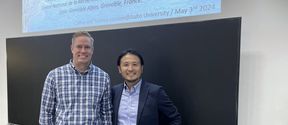Everyday choices: How would you fill waste land, Tuukka Saarimaa?

Where do you live?
I live in an apartment building in Kalasatama, Helsinki.
You originally hail from Kainuu. Do you miss anything about rural life?
I’m actually from a town, Kajaani, the regional centre. I miss the winters up North, but not much else really.
The segregation of residential neighbourhoods appears to be growing, especially in big cities. Won’t this lead to a widening chasm between rich and poor?
To be fair, nobody really knows if segregation is very harmful. The claim keeps getting repeated, but the issue is difficult to study.
What it boils down to is the price mechanism of the housing market. The fact that there are families with different levels of income and an urban area that contains different neighbourhoods. Ease of access to the city centre, where the majority of jobs are typically located, alone differentiates between neighbourhoods. Or an area might contain some attractive feature, such as the seashore.
Those who are most willing and able to pay end up living in the most desirable areas. Then it looks like lots of low-income people live in some other neighbourhoods, and this in turn appears to lead to more poverty. But the price mechanism is what’s really at work.
What can be done to provide good housing for low-income people as well?
There are efforts to resolve the perceived problems of segregation through social mixing, i.e. by building subsidised housing such as city-owned rental apartments in expensive areas.
But should public resources be focused on fighting segregation, or the same money be spent on providing direct housing subsidies to those who need it or, for example, perhaps give more resources to schools? At least we have some evidence of the effectiveness of these systems.
Should all urban waste land be filled?
If a plot is on some of the most valuable building land in the city, as is the case with the site between the Helsinki Music Centre and the Oodi library, it should benefit the citizenry in some way, for example by providing access to a nice relaxing park. For some reason, this area has been left unfinished, even though it could be very pleasant.
Of course, it is fair to consider whether a park is the best solution in general. After all, everything comes with an opportunity cost.
In the decision to build the central library, for example, the value of its site was assessed at a level corresponding with prices in the centre of Hyvinkää, which boggles the mind. An economist cannot help but think that, had the site been sold to a developer yielding a high-rise and lots of money from selling apartments in it, would the benefit not have been greater? An identical Oodi could have been built in, say, Pasila, where land is cheaper while simultaneously getting a bit more cash to cover, for example, teacher salaries.
It can, naturally, always be argued that Oodi is so beneficial in precisely this location that it was worth building. But calculations should be made using true values, not by pulling cost estimates out of a hat.
What is the ultimate problem in urban land use?
Excessive regulation. Too few homes are being zoned in attractive areas. In Kalasatama, for example, you’ve got terraced townhouses in places suitable for tall apartment buildings.
If the price per square metre indicates that an area is desirable, but it does not get built up, there should be a very good reason for this decision.
It is often claimed that areas filled with tall, densely-packed buildings become uncomfortable. But I find this threat implausible considering Helsinki’s population density.
How can housing policy become more fact-based?
The Helsinki Graduate School of Economics, where I am a Professor, is one way of introducing additional information to decision-makers. The joint Aalto, University of Helsinki and Hanken School of Economics doctoral school covers all of the central aspects of economics.
Our teaching, theses supervision, post-graduate students and post-doctoral researchers create fresh knowledge and findings. It’s important that researchers actively communicate their findings and take part in societal debate with decision-makers, politicians and civil servants.
But the fact remains that it is the politicians who themselves decide what information they want to take in.
Text: Paula Haikarainen.
This article was originally published in the Aalto University Magazine issue 25, October 2019. The Everyday choices column focuses on the personal choices experts make in association with their field of research.
- Published:
- Updated:
Read more news

A peek into research on electrospinning of Functional Polysaccharide Derivatives
We had the honour of hosting a guest speaker, researcher Issei Otsuka, from the University of Grenoble Alpes at our ‘Coffee and Science’ event. Dr. Otsuka is visiting Finland on Researcher Short Mobility program which is aimed for the establishment of scientific partnerships between France and Finland.
"Keep an open mind and step outside of your comfort zone"
Read what double award winner Kukka-Emilia Huhtinen wants to share about her doctoral studies in theoretical physics
"My PhD was great from every single point of view"
Read how Viliam Vaňo, Aalto thesis award winner, experienced his doctoral studies